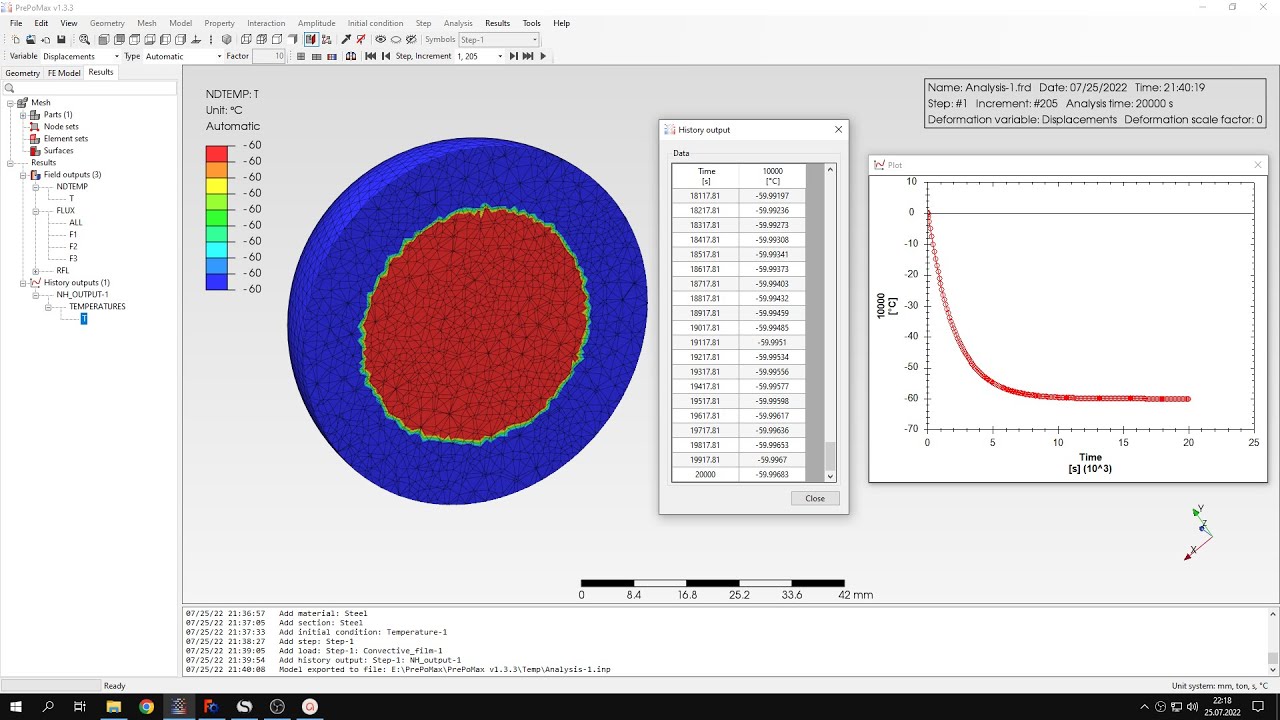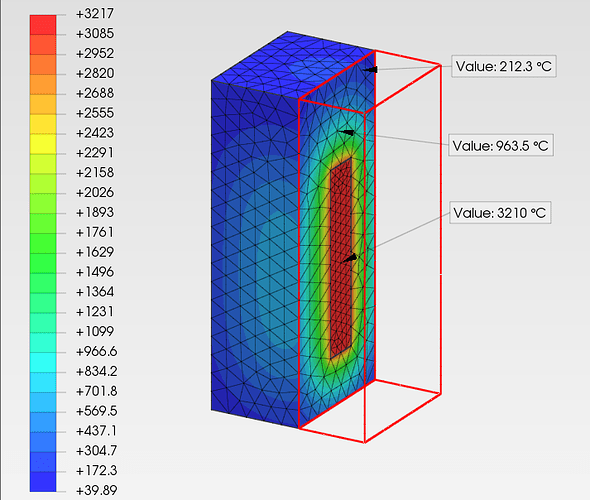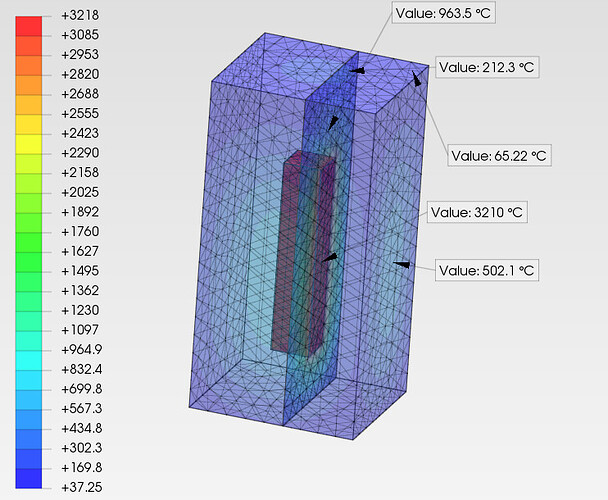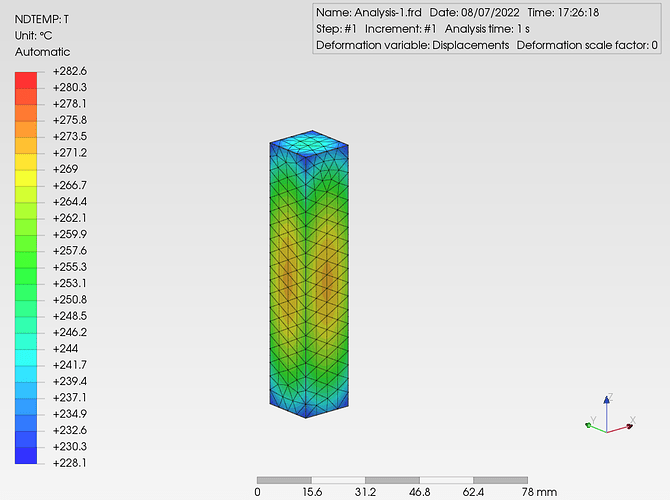Hi to All
Can i simulate the temperature a very hot sphere (200° C) in (immersed) the oil, with an ambient temperature of 20° C? If yes, can you list the steps?
Thank you very much
Giovanni Di Maria
Yes, check this recent video with a similar case:
Oil can be simulated as convective film load with a sink temperature of 20 °C and proper film coefficient. You will also have to assign the initial temperature of 200 °C to the sphere. As you can see in the video, there’s even an approximate analytical solution based on the lumped capacitance method.
Fantastic.
Thank you very much for your Help
Giovanni
HI
I have simulated a resistor of 200 Watt in the oil.
I don’t know if the results are correct.
I have created a little PDF document, with some steps, but i don’t know to attach it here.
Cheers
Giovanni
You can add .zip files so .pdf can be shared this way. Or you could host it somewhere and paste the link here.
Oil is simulated as a volume ? Did you try with convection load, as discussed before? The temperatures in your results are very high.
Yes, i have simulated your previous solution, it is more realistic.
This is the attachment, where oil is simulated as volume.
But i think that i am wrong in the numeric parameters…
olio03.zip (1.9 MB)
Cheer
Giovanni
Maybe 200 W is too much. I’m not an electrical engineer so I don’t have any experience with stuff like that but 200 W seems like quite a lot of power. Try running transient analysis to see how long it takes to reach these temperatures.
Just to make your workflow easier:
- you don’t have to define surfaces manually, they can be created when defining contact pairs
- you can use the Search Contact Pairs tool to automatically apply contacts
Actually, I would use tie constraints instead of contact pairs in this case (unless you know the value of gap conductance that should be used here).
HI.
Thank you very much.
- I have used Search Contact Pairs tool: simply fantastic.
So I have used Tie Constraints, the results is similar…
I think it is correct, becouse 200 W is very much.
Thank you very very much
Giovanni



